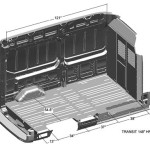Painting the interior of your car is a great way to update the look and feel of your vehicle. Many people choose to use interior car paint for plastic to give their car a more modern, up-to-date look. This type of paint is specifically designed for plastic surfaces and can provide a more durable paint job than other types of paint.
Types of Interior Car Paint for Plastic
There are several types of interior car paint for plastic available. The most popular are acrylic and enamel paint. Acrylic paint is the most commonly used type and is highly durable and long-lasting. It is also easy to apply and generally requires less preparation than other types of paint. Enamel paint is slightly more difficult to apply and may require more preparation, but it is more resistant to fading and scratching and provides a glossy finish.
Preparing the Surface for Interior Car Paint for Plastic
Before painting the interior of your car with interior car paint for plastic, it is important to properly prepare the surface. This includes cleaning the surface with a mild detergent and a damp cloth, and sanding any rough spots with fine-grit sandpaper. It is also important to remove any wax, grease, or other residue that may be present on the surface before applying the paint.
Applying Interior Car Paint for Plastic
Once the surface is properly prepared, it is time to apply the paint. The paint should be applied in thin, even coats using a brush, roller, or spray gun. For best results, it is important to allow each coat to dry completely before applying the next. It is also important to use a primer before painting to ensure the paint adheres properly to the surface.
Maintaining Interior Car Paint for Plastic
Once the interior car paint for plastic has been applied, it is important to maintain the paint job. This includes cleaning the surface regularly with a mild detergent and avoiding the use of harsh chemicals or abrasive cleaners. It is also important to wax the surface regularly to protect the paint and keep it looking its best.





:max_bytes(150000):strip_icc()/Rust-OleumAutomotive12ounceSatinSpray-5c0ed5a346e0fb000172002f.jpg)








Related Posts








